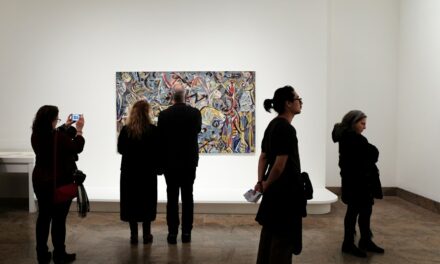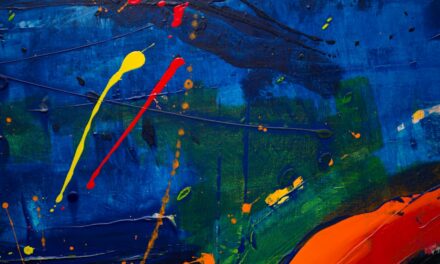Art journaling is a captivating blend of artistic expression and personal reflection, offering a unique avenue for individuals to explore their thoughts, emotions, and creativity. This practice transcends traditional journaling by incorporating visual elements such as drawings, paintings, collages, and mixed media, allowing for a richer and more immersive experience. The art journal becomes a sanctuary where one can freely express feelings that may be difficult to articulate through words alone.
It serves as a canvas for the soul, inviting individuals to delve into their inner worlds and document their journeys in a deeply personal manner. The beauty of art journaling lies in its accessibility; it requires no formal training or artistic prowess. Anyone can engage in this practice, regardless of their skill level.
The act of creating becomes a form of therapy, enabling individuals to process their experiences and emotions while simultaneously nurturing their creative instincts. As one immerses themselves in the process, they often discover new facets of their identity and gain insights that can lead to profound self-discovery. In this article, we will explore the myriad benefits of art journaling, practical tips for getting started, various techniques and materials to enhance the experience, and ways to incorporate mindfulness into this enriching practice.
Summary
- Art journaling is a creative and personal way to express thoughts, emotions, and experiences through a combination of writing and art.
- Art journaling can help individuals explore their inner thoughts and feelings, leading to self-discovery and personal growth.
- To get started with art journaling, all you need is a journal and some basic art supplies, such as pens, pencils, and watercolours.
- There are various techniques and materials that can be used for art journaling, including collage, mixed media, and different types of paper.
- Using prompts and exercises can help individuals engage in self-reflection and inspire creativity in their art journaling practice.
Benefits of Art Journaling for Self-Discovery
Facilitating Self-Discovery
One of the most significant advantages is its capacity to facilitate self-discovery. As individuals engage with their art journals, they often find themselves confronting emotions and thoughts that may have been buried or overlooked. The act of creating can serve as a catalyst for introspection, prompting individuals to explore their beliefs, desires, and fears in a safe and non-judgmental space.
Processing Trauma and Difficult Experiences
This exploration can lead to greater self-awareness and a deeper understanding of one’s motivations and aspirations. Moreover, art journaling can be an effective tool for processing trauma or difficult experiences. By translating complex emotions into visual forms, individuals can externalise their feelings, making them easier to confront and understand.
Fostering Healing and Empowerment
This therapeutic aspect of art journaling can foster healing and resilience, allowing individuals to reclaim their narratives and find empowerment in their stories. As they document their journeys through art, they may also uncover patterns or recurring themes in their lives, providing valuable insights that can inform future decisions and personal growth.
Getting Started with Art Journaling
Embarking on the journey of art journaling can be both exciting and daunting. To begin, one must first gather the necessary materials. A blank journal or sketchbook serves as the foundation for this creative endeavour.
It is essential to choose a medium that resonates with you; whether it be watercolour paper, mixed media paper, or even a simple notebook, the key is to select something that invites exploration. Additionally, a variety of art supplies such as paints, markers, coloured pencils, and collage materials can enhance the creative process. However, it is important to remember that the focus should be on the act of creation rather than the quality of the materials.
Once you have your materials ready, it is helpful to establish a comfortable space where you can immerse yourself in your art journaling practice. This space should be free from distractions and conducive to creativity. Setting aside dedicated time for your art journal can also help cultivate a routine that encourages regular engagement with your creative self.
As you begin to fill the pages of your journal, allow yourself the freedom to experiment without fear of judgement. Embrace spontaneity and let your intuition guide you; there are no rules in art journaling—only opportunities for exploration.
Different Techniques and Materials for Art Journaling
The world of art journaling is rich with diverse techniques and materials that can elevate your creative experience. One popular technique is collage, which involves assembling various images, textures, and materials onto the pages of your journal. This method allows for a dynamic interplay between different elements, encouraging you to think outside the box and create visually striking compositions.
You might find inspiration in magazines, newspapers, or even your own photographs as you curate a collection of images that resonate with your emotions or experiences. Another technique worth exploring is mixed media, which combines various artistic mediums such as paint, ink, fabric, and found objects. This approach invites experimentation and innovation, as you layer different materials to create depth and texture in your journal.
For instance, you might start with a watercolour background before adding ink drawings or fabric swatches on top. The beauty of mixed media lies in its limitless possibilities; each page becomes a unique expression of your creativity and emotional landscape.
Using Prompts and Exercises for Self-Reflection
Incorporating prompts and exercises into your art journaling practice can significantly enhance your self-reflection process. Prompts serve as starting points that guide your creative exploration and encourage deeper introspection. For example, you might begin with a simple prompt such as “What brings me joy?” or “What am I grateful for today?” These questions can spark ideas for visual representations of your thoughts and feelings, allowing you to delve into your psyche in a structured yet creative manner.
Additionally, exercises such as free writing or stream-of-consciousness journaling can complement your artistic endeavours. By writing without inhibition before or during your creative process, you may uncover hidden emotions or thoughts that inform your artwork.
Incorporating Mindfulness and Meditation into Art Journaling
Preparing for a Mindful Art Journaling Session
Before beginning your art journaling session, consider taking a few moments to centre yourself through deep breathing or meditation. This practice allows you to clear your mind of distractions and focus on the present moment, creating an ideal mental space for creativity to flourish.
Maintaining Mindfulness During the Creative Process
As you create in your journal, aim to maintain a mindful awareness of your thoughts and feelings as they arise. Rather than striving for perfection or adhering to preconceived notions of what your artwork should look like, embrace the process itself. Allow yourself to be fully immersed in the act of creation—notice the colours you choose, the textures you explore, and the emotions that surface as you work.
The Benefits of a Mindful Approach to Art Journaling
This mindful approach not only enhances your artistic expression but also deepens your understanding of yourself as you navigate through your inner landscape.
Sharing and Connecting with Others through Art Journaling
While art journaling is often an intimate and personal practice, sharing your creations with others can foster connection and community. Engaging with fellow art journalers—whether through social media platforms or local workshops—can provide valuable support and inspiration as you navigate your creative journey. Sharing your work allows you to celebrate your progress while also receiving feedback from others who understand the transformative power of this practice.
Participating in online challenges or collaborative projects can also enhance your experience by introducing new perspectives and techniques. These interactions not only encourage accountability but also create opportunities for learning from others’ experiences and artistic styles. By connecting with like-minded individuals who share a passion for art journaling, you may find encouragement in your self-discovery journey while also inspiring others along the way.
Maintaining a Daily Art Journaling Practice
Establishing a daily art journaling practice can be immensely rewarding but requires commitment and intention. To maintain consistency, consider setting aside a specific time each day dedicated solely to your journal. This could be in the morning as a way to set intentions for the day ahead or in the evening as a means of reflection on the day’s events.
The key is to create a routine that feels natural and sustainable for you. As you cultivate this daily practice, remember that it is not about producing perfect artwork but rather about engaging with yourself authentically through creativity. Some days may yield more profound insights than others; some pages may be filled with vibrant colours while others may remain sparse or unfinished.
Embrace each moment as part of your journey—every stroke of paint or line drawn contributes to your evolving narrative. Over time, you will likely find that this daily engagement not only enhances your artistic skills but also deepens your understanding of yourself and enriches your life experience. In conclusion, art journaling is an empowering practice that offers numerous benefits for self-discovery and personal growth.
By embracing creativity as a means of exploration and reflection, individuals can unlock new dimensions of their identities while fostering emotional resilience. Whether you are just beginning or have been journaling for years, there is always room for growth and exploration within this dynamic practice. So gather your materials, set aside some time for yourself, and embark on this transformative journey into the world of art journaling.
Art journaling is a wonderful way to explore creativity and self-discovery through daily practice.
For those looking to add more vibrancy to their art journaling practice, Vibrant Expressions offers tips and techniques to enhance your artistic creations. Additionally, if you are interested in trying out a new art technique, encaustic hot wax painting is a unique and fascinating medium to experiment with. Check out An Introduction to the Art Technique: Encaustic Hot Wax Painting for more information. Remember, art journaling is a journey of self-discovery, so don’t be discouraged by common mistakes in oil painting. Learn how to fix them and continue to grow as an artist by reading Common Mistakes in Oil Painting and How to Fix Them.
FAQs
What is art journaling?
Art journaling is a creative practice that combines writing and art-making in a journal format. It involves using various art materials such as paints, markers, collage, and more to express thoughts, feelings, and experiences.
How can art journaling help with self-discovery?
Art journaling can help with self-discovery by providing a safe space for self-expression and reflection. Through the process of creating art and writing, individuals can explore their emotions, thoughts, and experiences, leading to a deeper understanding of themselves.
What are the benefits of art journaling?
The benefits of art journaling include stress relief, increased self-awareness, improved problem-solving skills, enhanced creativity, and a greater sense of self-acceptance and self-expression.
Do I need to be an artist to start art journaling?
No, you do not need to be an artist to start art journaling. Art journaling is about the process of self-expression and exploration, not about creating perfect or technically skilled artwork. It is open to everyone, regardless of artistic ability.
What materials do I need to start art journaling?
The materials needed to start art journaling can vary, but commonly include a journal or sketchbook, pens, pencils, paints, markers, collage materials, and any other art supplies that inspire you. There are no strict rules, so feel free to use whatever materials you enjoy working with.


